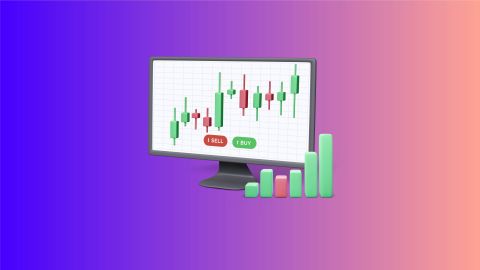What are the features of stock index futures in India?
Stock index futures in India offer several key features that make them popular among traders and investors:
- Liquidity: These contracts are highly liquid, meaning there is usually a steady flow of buyers and sellers. This allows for smooth trade execution and helps participants secure fair prices when entering or exiting positions.
- Hedging: Investors often use index futures as a protective strategy. For example, a portfolio manager may take a short position in index futures to offset potential losses in their stock holdings during a market downturn.
- Speculation: Apart from hedging, these instruments are also widely used for speculative purposes. Traders can take positions based on their expectations of market direction, aiming to profit from price movements in the index.
- Low Margin Requirements: Compared to other types of derivatives, stock index futures generally have lower margin requirements. This feature makes them more accessible, especially to retail investors with limited capital, encouraging broader participation in the futures market.
How to trade index futures?
Trading in index futures involves a binding agreement between a buyer and a seller to exchange the contract at a predetermined price on a specified future date. The process typically unfolds as follows:
- Orders are placed through a futures broker, who facilitates transactions on behalf of traders.
- Traders establish long positions (buy) if they expect the index to rise, or short positions (sell) if they anticipate a decline.
- Both initial and maintenance margins are required to open and maintain positions.
Settlement is done entirely in cash, not physical delivery. On expiry, the difference between the contract price and the market price is paid or received in cash. If the market rises, the buyer profits; if it falls, the seller gains.
Types of stock index futures
Various types of stock index futures are available, offering exposure to specific market sectors or indices. Examples include:
- Nifty 50: Covers the 50 leading companies in the Nifty index.
- Nifty IT: Comprises stocks from the IT sector, with its performance tied to the sector’s outlook.
- S&P BSE Sensex: Tracks 30 prominent companies listed on the BSE.
- Nifty Bank: Includes major banking stocks, reflecting the banking sector's health.
- S&P BSE Bankex: Tracks banking stocks within the Sensex.
- S&P BSE Sensex 50: A broader variant of the Sensex, covering 50 stocks.
- S&P BSE Bharat 22 Index: Comprises 22 public sector companies, offering a stake in the Indian public sector. These types allow investors to target specific sectors, mitigate risks, and diversify their holdings.
Who trades in index futures?
A diverse group of participants actively trades in index futures. Let us explore who these participants are:
1. Traders:
Individuals and institutions engage in index futures trading to capitalise on short-term price movements. They aim to profit from fluctuations in the underlying index.
2. Hedgers:
- Portfolio managers and mutual funds: They use index futures to hedge their existing equity portfolios. By taking offsetting positions, they mitigate potential losses due to adverse market movements.
- Corporate entities: Companies hedge against market risks by using index futures. For instance, a company with significant exposure to the Nifty 50 index might use futures contracts to protect its portfolio value.
3. Arbitrageurs:
- Cash-futures arbitrage: These traders exploit price discrepancies between the spot (cash) market and the futures market. They simultaneously buy in the cash market and sell in the futures market (or vice versa) to profit from the price differential.
- Index arbitrage: Arbitrageurs capitalise on differences between the index futures price and the actual index value. They aim to maintain equilibrium by buying or selling futures contracts based on market conditions.
4. Institutional investors
- Foreign institutional investors (FIIs): FIIs actively participate in index futures trading. They manage large portfolios and use futures for hedging.
- Domestic institutional investors (DIIs): DIIs, including mutual funds and insurance companies, engage in these contracts to optimise their investment strategies.
5. Retail traders and investors:
- Individual traders: Retail investors with varying risk appetites trade index futures. Some seek short-term gains, while others use futures for long-term portfolio management.
- High-net-worth individuals (HNIs): HNIs participate in index futures to diversify their investment portfolios and manage risk.
What is the importance of index futures?
Stock index futures are significant in the financial markets for several reasons:
- They enable investors to gain market exposure without committing large amounts of capital, offering a cost-effective way to speculate or hedge.
- Traders can use them to speculate on the movement of an entire index rather than individual stocks, making them efficient tools for broad market strategies.
- They serve as risk management instruments, allowing investors to protect their portfolios against significant market declines. For example, selling futures during a bearish phase can help offset losses in an existing stock portfolio.
- These contracts are vital for both institutional and retail investors, offering flexibility, leverage, and strategic options in various market conditions.
What are the index futures and margins?
When trading in Future and Options, investors dealing in index futures are not required to pay the full contract value upfront. Instead, they deposit an initial margin, which is a portion of the total value. As prices fluctuate, they must maintain a minimum balance known as the maintenance margin to cover potential losses. A sharp market move can trigger a margin call, requiring additional funds. In Future and Options trading, index futures represent legally binding contracts, obligating both buyer and seller to fulfil the contract upon expiry. This differs from options contracts, which provide the right but not the obligation to execute the trade.
Advantages of investing in stock index futures
- Portfolio diversification: These contracts allow investors to gain exposure to a broad market index, such as the Nifty 50, which inherently diversifies their investment portfolio across various sectors and companies.
- Hedging against market risks: Investors can use index futures to hedge their existing stock portfolios against market downturns. By taking short positions in index futures, investors can offset potential losses in their stock holdings during market declines.
- Leverage: A key benefit is the ability to gain market exposure by investing only a portion of the capital required for direct investments. This amplifies both potential returns and risks.
- Liquidity: These contracts are traded on highly liquid exchanges, providing investors with ample opportunities to enter and exit positions without significantly impacting market prices.
Disadvantages of investing in stock index futures
- Leverage risk: While leverage can amplify potential gains, it also increases the risk of losses. If the market moves against the investor's position, losses can accumulate quickly, potentially leading to substantial financial losses.
- Margin calls: Trading on margin exposes investors to the risk of margin calls, where they are required to deposit additional funds into their trading accounts to cover losses. Failure to meet margin calls may result in forced liquidation of positions at unfavourable prices.
- Limited time horizon: Each contract has expiration date, limiting investors' time horizons for holding positions. Rolling over contracts entails transaction costs and may not always be optimal, particularly during periods of high volatility.
- Market volatility: These instruments can be highly volatile, especially during periods of economic uncertainty or geopolitical instability. Sudden market movements can lead to significant losses for investors who are not adequately prepared.
- Counterparty risk: Trading index futures involves counterparty risk, as investors rely on the financial stability of the exchange and clearinghouse counterparties to fulfil their contractual obligations. In the event of a counterparty default, investors may face difficulties in recovering their investments.
Conclusion
In conclusion, stock index futures provide investors with a versatile tool to enhance portfolio diversification. While they offer advantages like high liquidity and trading flexibility, they also involve risks such as leverage exposure, margin requirements, and counterparty concerns. To navigate these instruments successfully, investors should have a solid understanding of how they work. With thorough research, disciplined risk management, and a well-defined strategy, index futures can help investors adapt to market shifts and pursue their financial objectives with greater assurance.





